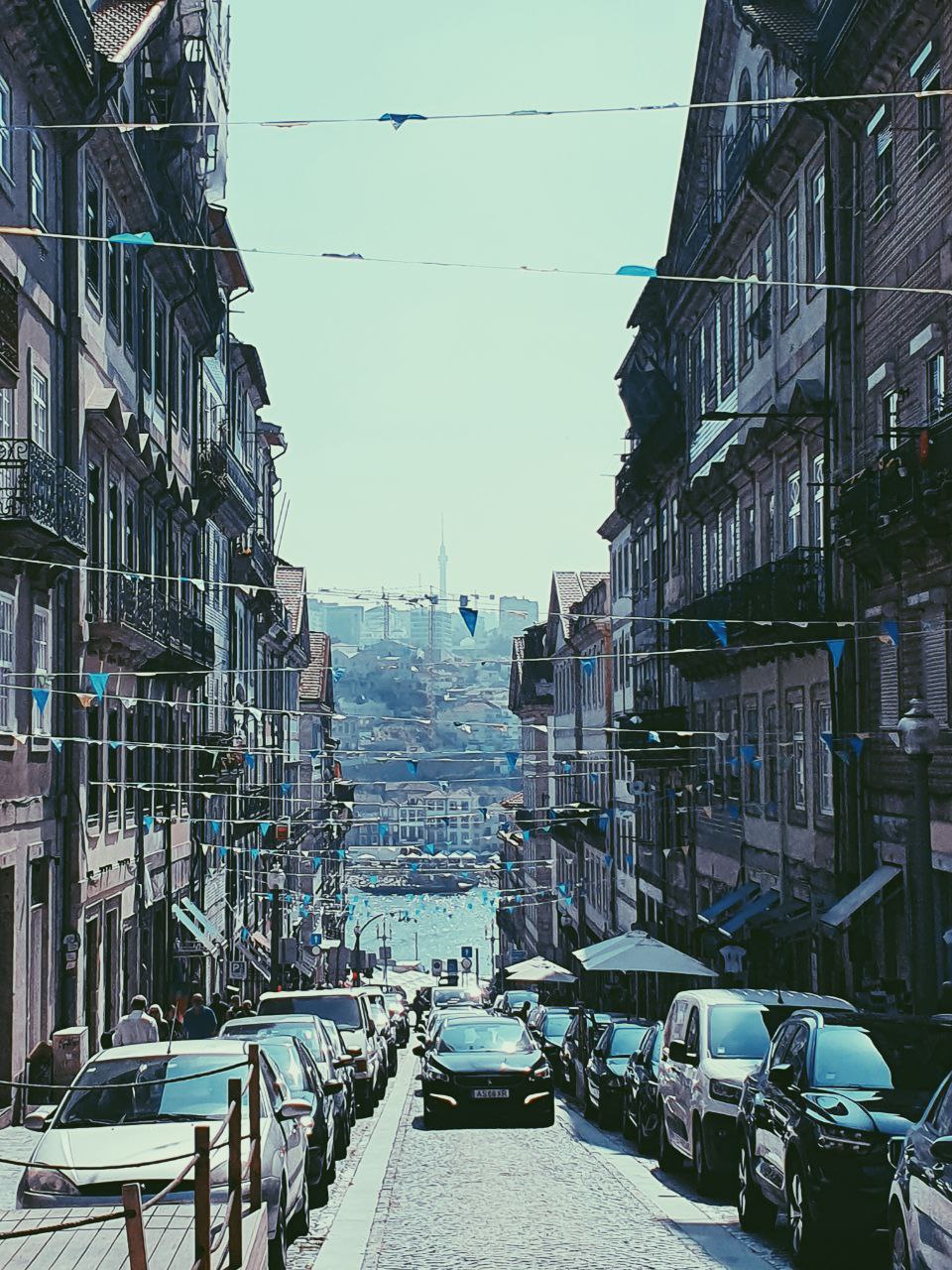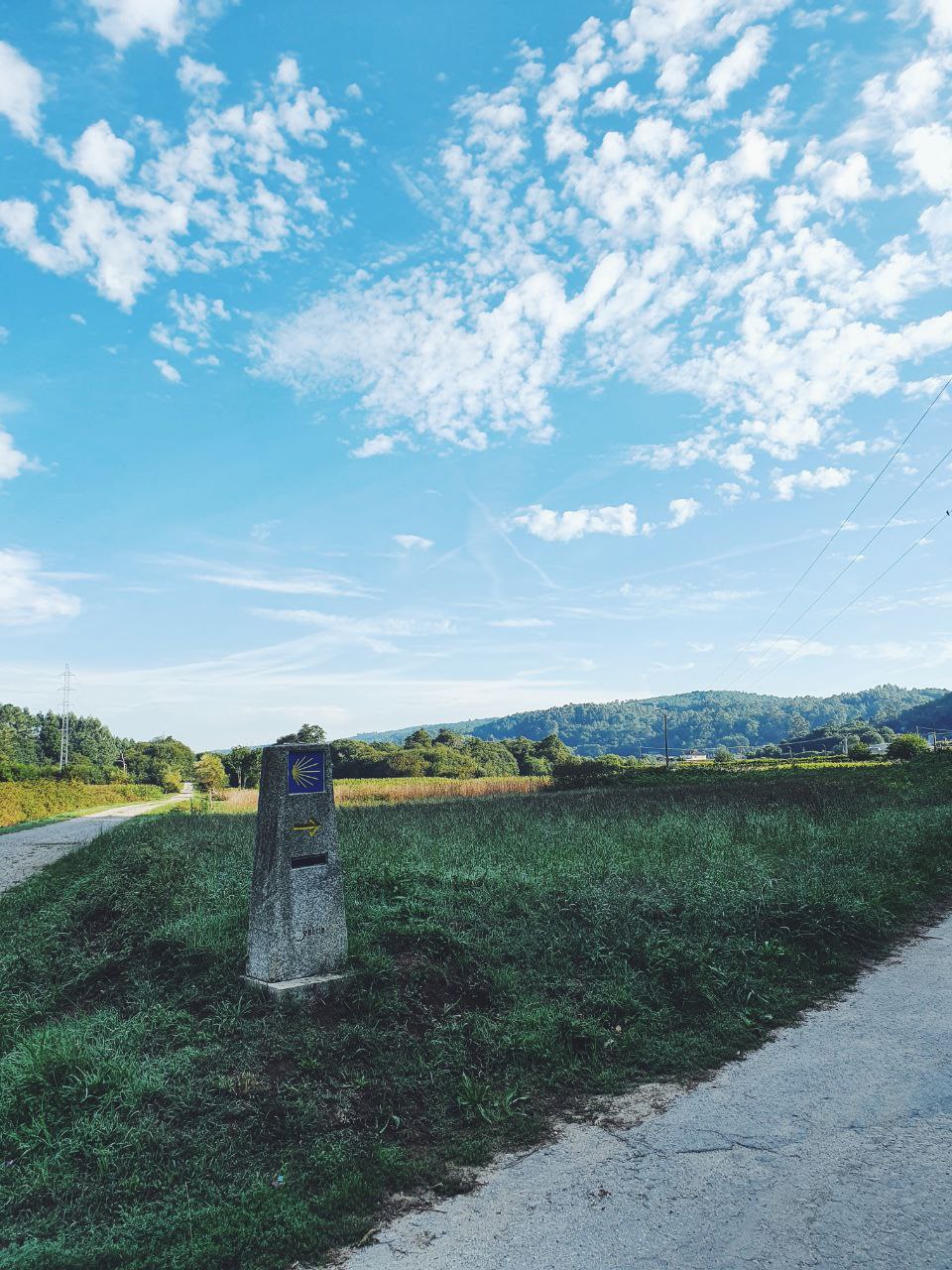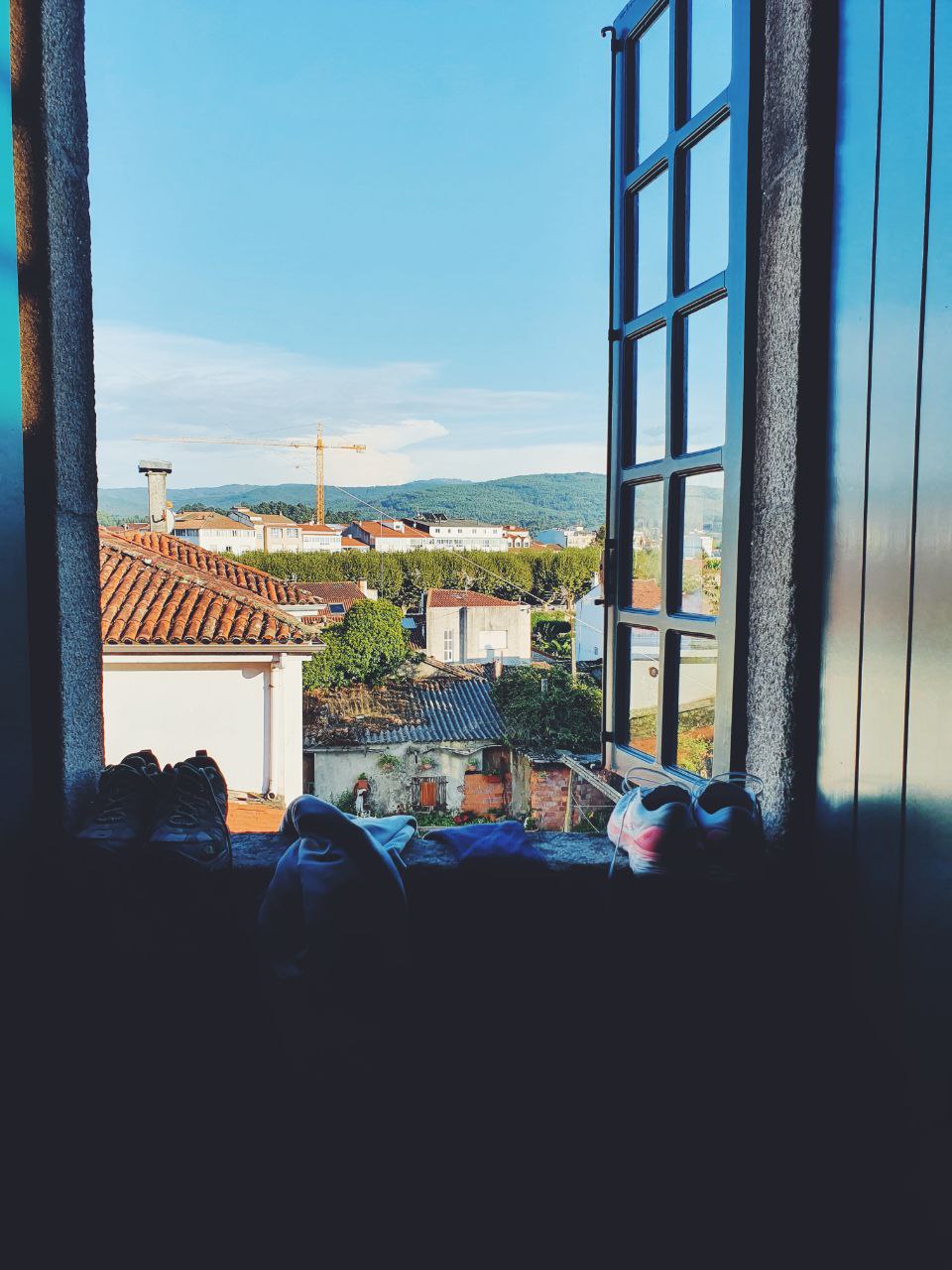The route walked from Porto to Santiago de Compostela
I recently walked the Camino De Santiago. The Camino is a long, Christian pilgrimage that focuses on self-reflection. I was prepared for the physical challenge of the Camino. I had decent socks, a new backpack, and the training I had completed left me in good shape. The thing I did not prepare for was the mental challenge ahead of me.
When I left my hostel in Porto to begin the hiking trail I passed by many pilgrims, all greeting me with the phrase “Buen Camino!”. Not 15km into my hike did I encounter something I was unable to train for in Germany: the heat. I am used to existing in warmer climates and Portugal’s heat was not new to me. The thing I was ignorant of was how sweat and friction affected the feet. Nearly instantly my lack of preparation was rewarded by a blister around 5cm in diameter.
Although a blister is a physical ailment, from which the pain that it brought was at times causing me to limp from pain, it hindered me in a much more serious way. It gave me a reason to want to quit.
Each day after the first during the Camino started the same way. I left my hostel at around 6 am and marched North. The flawless and unadorned sky would be my only companion. I would walk slower than my normal walking pace (roughly 3km/h as opposed to 5km/h). I remember the first moment that my pride was damaged giving me a reason to want to abandon the entire trip. As I was tending to my feet on one of the many pristine beaches that lie north of Porto, two elderly ladies passed by me who were hiking the Camino. As they passed, obviously slowing down to look at my feet, one of them winced at my swollen sole.
Although this lady had offered only a harmless, perhaps even sympathetic, gesture, it rattled something from deep within me that would take days for me to come to terms with. I entered the Camino with a highly inflated ego. I was in good physical shape, I had been visiting the gym 3-4 times a week for months before the Camino. What I failed to invest time in was research or planning for my feet’s health. Each witness to my blisters, be they experienced hikers or doctors, scorned me with the same piece of advice: “the best way to treat a blister is to prevent it”. How could I have been so foolish? Looking back now, with my skin mostly healed, I am at peace with my lack of preparation but, in the moment, I was devastated. Each day I would inevitably collapse on some gorgeous landscape or in front of yet another wonder and I would think of quitting.
Each step of the first 6 days (roughly 120km) caused pain to coarse across my feet. Each jolt of pain a reminder that I could have avoided this if only I had read a little more or been a little more cautious. What made me overcome this self-deprecation was speaking to other hikers. I was told of horrific blisters that they had in the past and how they recovered from them. Makeshift surgeries were made in the hostels where the experienced would help mend the feet of the new.
My blisters taught me the first two important lessons of my trip: don’t be afraid to ask for help and don’t make the same mistake twice. When my feet had healed my footcare routine was enviable. Ointments and creams, plasters, soap, and baby powder all nurtured my feet every evening when I returned from the trail and every morning before I started.
The inevitable, clockwork breakdown that I would have each day was coupled only with a huge ego boost. Each day, at around 12, the desire to give up would dominate my thoughts. I looked at flights back home, I looked at routes to the airport. I never indulged myself though. The other, inevitable mood swing was enthralling. Following the thoughts to quit, I would quickly perk up, normally as the pain in my feet began to subside as the rhythm of walking took up. I felt on top of the world. I thought I could walk 10km more than I was required to each day. I was friendly, I was boisterous, and I could have done anything. I spoke to other hikers as if they were old friends, I flexed my poorly developed Spanish and Portuguese, and I jogged down roads as if to prove to myself that I could.
The other great lesson I learned was recognising my moods coming and telling myself I could get through them or that they would not last forever. Recognising that the slumps were only temporary, that eventually, I would be enjoying myself and that the foot pain was only temporary was contrasted only by having to stop myself from trying to complete two days’ hikes in one.
This understanding of my own moods has continued to serve me well post-Camino. Stress at work flows over me more easily and happy times are more appreciated.
Although at times the Camino was a deeply stressful time it was also one of the most fulfilling things I had ever done. I spoke to other pilgrims in depth about praying and meditation. I reflected on my life and the decisions that had led me there. I broke bread with people I had never done so before and heard stories and languages I had never done before. The views were incredible and, despite not being religious, I have to admit that the presence of churches everywhere did move me.
With these lessons learned I plan to do more hikes in the future. I have listed my “to-do” list here.
Below are a few pictures from my hike.
 The first view of El Camino. Porto, Portugal.
The first view of El Camino. Porto, Portugal.
 The shell marker that lead me along the way. Somewhere in Spain.
The shell marker that lead me along the way. Somewhere in Spain.
 Shoes of hikers drying out in front of the penultimate stop. Padron, Spain.
Shoes of hikers drying out in front of the penultimate stop. Padron, Spain.
 But a taste of the wonders Spain and Portugal have to offer. Redondela, Spain.
But a taste of the wonders Spain and Portugal have to offer. Redondela, Spain.